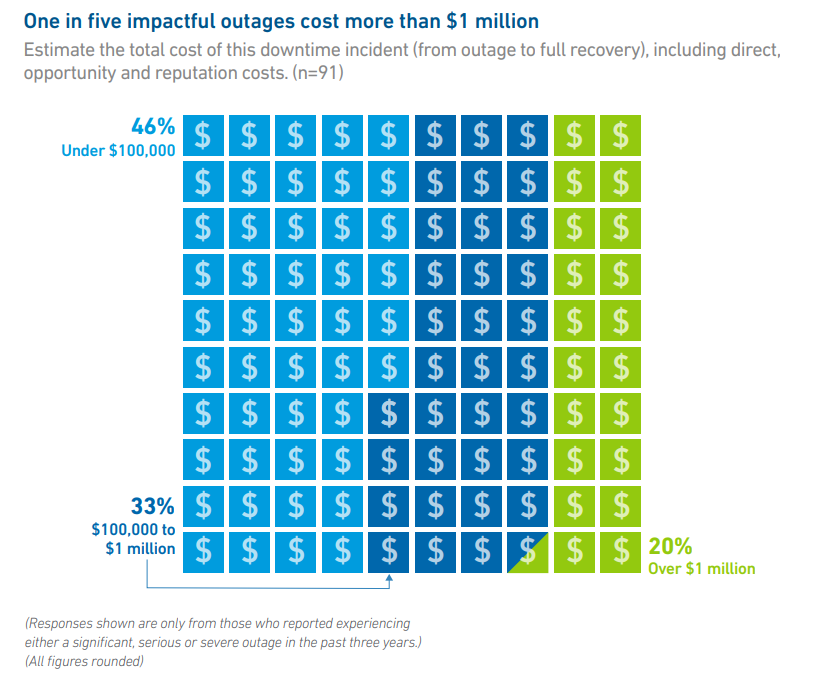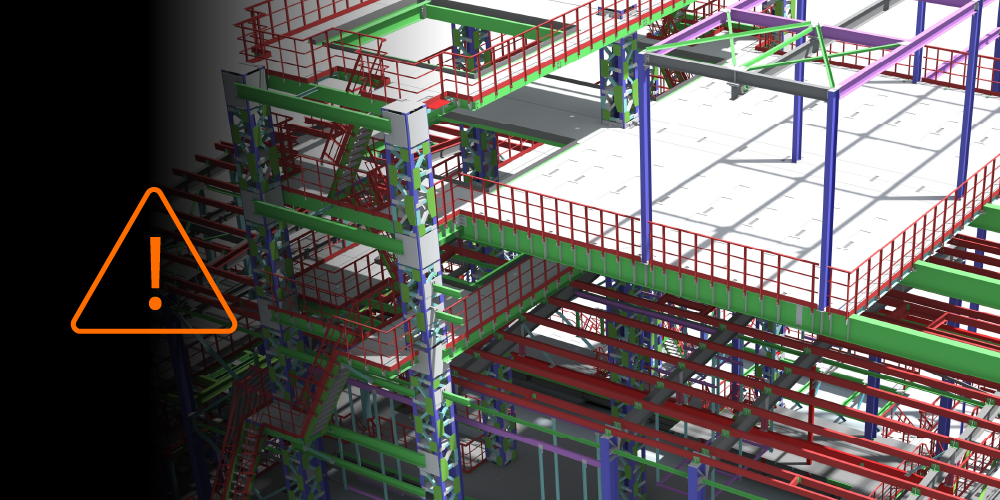Related Articles
— 5 min read
Ctrl + Build: The Data Centre Balancing Act – Why Commissioning Risk is the Biggest Blind Spot in Today’s Builds


Last Updated Sep 10, 2025

Simon Baker
Simon Baker is a Solutions Engineer at Procore Technologies, where he helps construction businesses across Australia and New Zealand drive efficiency and innovation through technology. Before joining Procore, Simon built a strong foundation in the construction industry, working as a Service Coordinator at Construction Services and Infrastructure, where he was involved in delivering Data Centre projects across Australia. Earlier in his career, Simon spent nearly eight years as an electrician at Castle Electrical & Solar, where he completed his apprenticeship and led residential and commercial projects, including level 2 electrical works and solar and battery installations. With hands-on project management experience and a deep understanding of building services, Simon is passionate about empowering construction teams to deliver better outcomes through smarter processes and technology.

Maryrose Walsh
Maryrose is the Manager of Enterprise Solutions Engineering at Procore and is dedicated to transforming the construction industry through innovative technology solutions. With a life long career in Pre Sales spanning many industries, she has a strong technical foundation in software architecture, integration, and scalable platforms. Bringing this rich experience to Procore, Maryrose excels at aligning complex solutions with the real-world needs of construction businesses through her customer first mindset and strategic approach. With her passion for driving innovation and efficiency, she is dedicated to collaborating with construction organisations to achieve transformative outcomes through technology.
Last Updated Sep 10, 2025

This is the first instalment of Ctrl + Build — Procore’s new series exploring the fast, complex, high-stakes world of data centre construction. From commissioning risk to carbon strategy, we’re unlocking what it takes to build smarter, safer and sharper.
Data centres may look like simple structures – steel, slab and services – but inside, they’re complex, high-stakes, precision-built environments. That paradox exposes builders to risk, especially during commissioning.
Table of contents
What Makes Data Centres Different?
The explosion in data demand is fuelling a global boom in data centre construction.
“Exponential” is an overused term – but in this case, it’s accurate. The pace of investment in data centres has become almost impossible to quantify. Each new report offers an estimate larger than the last.
Artificial intelligence, cloud computing, crypto mining and the Internet of Things are driving ever-greater demand for processing power – and the infrastructure to support it must scale rapidly in response.
An ecosystem of hyperscalers, developers, equipment manufacturers, utilities companies and infrastructure investors are coalescing around three clear objectives: scalability, reliability and efficiency.
The stakes are high and speed to market is critical. In the race to meet demand, delivery risk is escalating. While many builders see data centres as just another infrastructure project, those who’ve done it before know: the biggest risks lie where you least expect them.
Most of the project is still to be built once the façade goes up. Services are the most complex part of a data centre build – and sometimes account for up to 70% of the project’s cost.
Simon Baker
Procore
Not in the structure, but in the systems. Not in the slab, but in the services. And especially, in the final mile that brings it all together: commissioning.

Asia Pacific Data Centre Cost Guide, 2025. Data Centre Cost Breakdown (Sydney, Melbourne, Perth)
More Than Meets the Site
At first glance, a data centre may seem like a tin shed on a concrete slab. But behind the façade lies critical systems built for uptime, security and scale.
That’s why data centre delivery is about more than speed. It’s about precision. Nowhere is that more critical than in the final mile: commissioning. Consider:
- Uptime requirements: Tier 4 data centres aim for 99.995% uptime per year – that’s less than 26 minutes downtime. Missed commissioning steps or service faults can compromise this from day one.
- Redundancy layers: Most data centres have duplicate systems to ensure uptime. Managing these adds considerable complexity to design, commissioning and testing.
- Data security protocols: With hyperscale clients often housing sensitive or regulated data, any contractor working on a data centre build may be required to meet ISO 27001 compliance to ensure architectural, engineering and operations plans do not fall into the wrong hands.
Commissioning isn’t just the final step — it’s the tipping point between a functioning facility and a stalled investment.
Table 1: Data Centre Tiers and Reliability Standards
| Tier | Uptime Guarantee | Annual Downtime | Key Feature |
| 1 | 99.671% | Up to 28.8 hrs | Basic backup |
| 2 | 99.741% | Up to 22 hrs | Redundancy for critical systems |
| 3 | 99.982% | Up to 1.6 hrs | Fully redundant and maintainable |
| 4 | 99.995% | Less than 26 minutes | Fault-tolerant infrastructure |
Sources: Uptime Institute, 2025; Uptime.is, 2025; Data Centre Info, n.d.
The Hidden Risk of Commissioning
Commissioning – the process of testing and verifying every system before go-live – is the most critical phase of a data centre build. Yet it is also the phase most likely to cause costly delays. Just some of the reasons include:
- Incomplete inspections: Systems can’t be certified for use unless every element has been reviewed and approved, often across multiple trades.
- Poor documentation: Paper-based defect lists or scattered spreadsheets lead to gaps in asset registers and inspection records.
- Service clashes: Mechanical, electrical and fire protection systems may interfere with each other if not coordinated upfront.
- Delayed utility integration: Power or data feeds from external providers may not be ready when needed.
- Lack of digital handover planning: Without a clear digital quality assurance process, key steps are missed, leading to retesting and rework.
Commissioning delays can add an average of 4–6 weeks to the delivery timeline, says Procore Solutions Engineer Simon Baker.
Even a week-long delay in commissioning could represent millions in lost value, and reputational damage that’s much harder to quantify.
Maryrose Walsh
On high-stakes hyperscale builds, the cost of sitting idle can be staggering. According to some estimate, hyperscale data centres can generate US$1 million per minute in revenue – meaning delays or outages can cost just as much.

Source: Uptime Intelligence Data Survey, 2024
Why Builders Fall Short
Traditional contractors, regardless of their experience, often approach data centre builds with a mindset shaped by commercial towers or warehouses. That works fine, until they reach commissioning. Why? Because:
- Service integration is not standardised across the industry
- Many subcontractors lack experience in high-precision environments
- Too many builders still rely on paper-based processes and ad hoc tracking tools.
In one extreme example, Simon Baker worked on a fully built data centre that was left idle for months because coordination with the utility provider fell through. The project had no power – and no plan B.
What Better Looks Like
Addressing commissioning risk isn’t about adding more process. It’s about doing the right things – earlier and smarter.
It starts with smart, digital workflows that streamline inspections and handover. Then standardised processes and early coordination. And building a single source of truth from Day One
Maryrose Walsh
Three quarters of customers that use Procore report an average of 16% reduction in rework. This is a key metric for all builders, but especially for data centre project teams looking to hit the “right first time” standard that hyperscale clients now demand, Maryrose notes.
The bottom line? In data centre delivery, the finish line isn’t just handover. It’s performance from the first minute of uptime.
The best data centres don’t just run well — they start right. Commissioning is where it all comes together, but success depends on setting up the right systems and workflows from Day One.
Simon Baker
Procore
Commissioning remains the most under-recognised – and most consequential – risk in data centre delivery. Builders with a background in structure rather than services are especially vulnerable, often underestimating the complexity of commissioning until it’s too late.
The way forward is clear: standardisation, early service coordination, and digital workflows are essential to mitigating delays, avoiding costly rework, and protecting project margins. Real-time data captured during commissioning empowers smarter scheduling, forecasting, and decision-making across the project lifecycle.
By connecting every stakeholder to a single source of truth, Procore helps data centre project teams achieve greater visibility, accountability, and trust — driving sharper project outcomes and faster speed to revenue.
See what’s coming in construction over the next decade.
Download the Future State of Construction Report for insights, trends, and innovations shaping the industry over the next 8–10 years.

this is part of the series
Ctrl + Build
Categories:
Written by

Simon Baker
Procore
Simon Baker is a Solutions Engineer at Procore Technologies, where he helps construction businesses across Australia and New Zealand drive efficiency and innovation through technology. Before joining Procore, Simon built a strong foundation in the construction industry, working as a Service Coordinator at Construction Services and Infrastructure, where he was involved in delivering Data Centre projects across Australia. Earlier in his career, Simon spent nearly eight years as an electrician at Castle Electrical & Solar, where he completed his apprenticeship and led residential and commercial projects, including level 2 electrical works and solar and battery installations. With hands-on project management experience and a deep understanding of building services, Simon is passionate about empowering construction teams to deliver better outcomes through smarter processes and technology.
View profile
Maryrose Walsh
Maryrose is the Manager of Enterprise Solutions Engineering at Procore and is dedicated to transforming the construction industry through innovative technology solutions. With a life long career in Pre Sales spanning many industries, she has a strong technical foundation in software architecture, integration, and scalable platforms. Bringing this rich experience to Procore, Maryrose excels at aligning complex solutions with the real-world needs of construction businesses through her customer first mindset and strategic approach. With her passion for driving innovation and efficiency, she is dedicated to collaborating with construction organisations to achieve transformative outcomes through technology.
View profileExplore more helpful resources

Managing Direct Costs in Construction: How Visibility Drives Profitability
Direct costs define the financial reality of every construction project. They cover the labour, materials, and equipment that drive delivery and determine profitability. But even the best-planned budgets can shift...

BIM Clash Detection: Reducing Rework, Delays, and Risk in Construction
Design clashes can be a significant hidden cost in construction, as each conflict between systems risks expensive rework, project delays, and reduced margins. BIM clash detection empowers teams to identify...

Next-Gen Job-Costing: Ready to Move? 5 Things to Consider Before You Get Started
In this three-part series, Quantity Surveyor turned Financial Solutions Specialist Clint Burgess uncovers the real-world gains for people, processes, and profits when businesses move from legacy to next-generation Enterprise Resource...

From Workarounds to Workflow: Solving Construction’s Legacy Job-Costing System Challenges with Next-Gen Tools
In this three-part series, Quantity Surveyor turned Financial Solutions Specialist Clint Burgess uncovers the real-world gains for people, processes, and profits when businesses move from legacy to next-generation Enterprise Resource...
